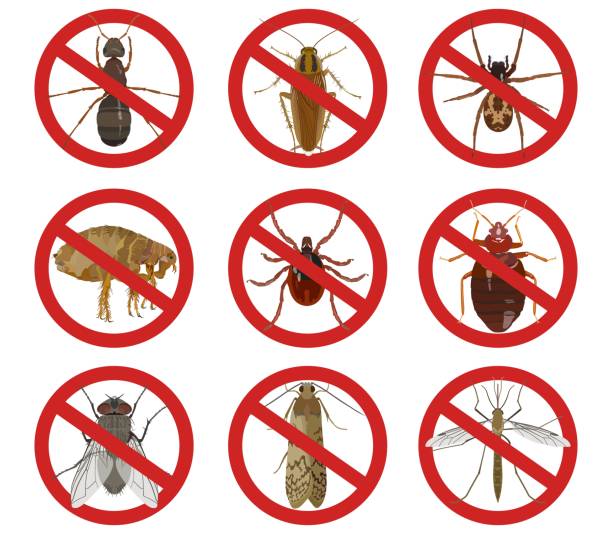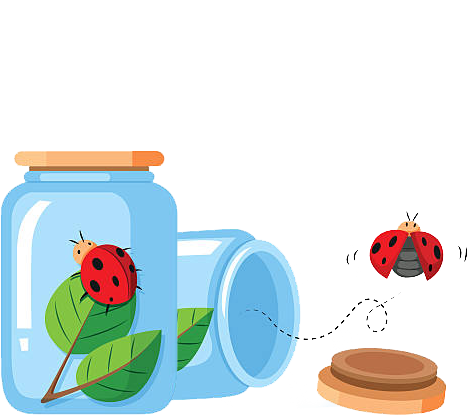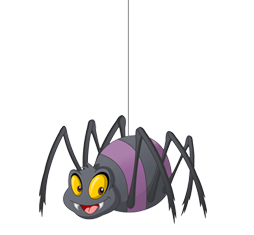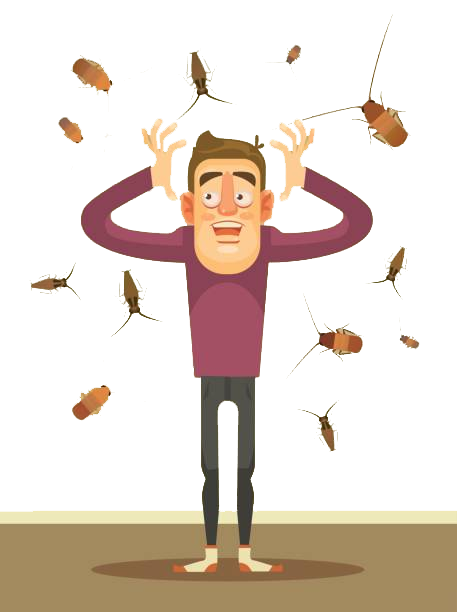
A common but often overlooked problem that many Arizona homeowners face is the presence of occasional pests. These uninvited guests are typically outdoor creatures that make their way into our homes accidentally. More than just a nuisance, their presence can be more frequent depending on the season, leading to unexpected encounters in your living space.
In Arizona’s unique climate, the shifts between dry and wet seasons can drive a variety of pests to seek shelter. Unlike the more notorious home invaders like termites or rodents, occasional invaders don’t set out to infest your home. They wander in, often attracted by light or in search of respite from outdoor conditions. Common examples include spiders, moths, beetles, and crickets, which are more prevalent at certain times of the year.
In this post, we’ll dive deep into the world of these occasional invaders. We’ll start by identifying who these invaders are and why they come into our homes. Next, we’ll discuss their seasonal patterns and explain the ecological roles they play—which might help you see them in a different light. We’ll also arm you with practical prevention tips to keep these pests out of your home and advice on what to do if they make an appearance.
Our goal at 520 Termite & Pest Solutions is to empower you, the homeowner, with the knowledge to manage these occasional pests effectively. Whether it’s understanding their behavior or learning how to fortify your home against them, we’re here to guide you through each step. So, let’s ensure your home remains comfortable and pest-free all year round.
Understanding Occasional Invaders
In Arizona, we often encounter a variety of creatures that, while not always a regular nuisance, can occasionally become uninvited guests in our homes. Essentially, these are insects and arachnids that don’t typically infest indoor environments but can wander inside, usually by accident. They come from their natural habitats, where their behavior and life cycles are attuned to the outdoor environment rather than the conditions found in human residences.
Definition and Characteristics
An occasional invader is any pest that enters homes sporadically, often due to environmental pressures like weather changes, rather than as part of a deliberate invasion or infestation. These invaders do not seek to settle within human spaces but end up inside while foraging or escaping extreme weather. Their visits are incidental, and they generally do not reproduce or establish populations indoors.
Examples of occasional invaders include:
- Jumping Spiders: Known for their quick movements and excellent hunting skills, these spiders are more curious about your home as a potential hunting ground rather than a permanent residence.
- Grasshoppers: Typically found in gardens, they might hop into homes accidentally but won’t stay for long.
- Lacewings: Beneficial in gardens for controlling aphids, these might flutter into your home attracted by lights.
- Beetles: Various types of beetles might wander in but they generally prefer the outdoors where they can find their natural food sources.
- Moths: Often seen around lights at night, they enter through open windows or damaged screens but don’t tend to live long indoors.

Seasonal Patterns of Invaders
Many occasional invaders have distinct patterns of appearance, closely tied to the seasons:
- False Chinch Bug (Spring): These bugs emerge in large numbers in spring, especially after heavy rains. They feed on mustard family weeds and can swarm homes if populations are high.
- Darkling Beetles (Summer): Common in the hotter months, these beetles are drawn to lights and can enter homes through small openings, especially around doors and windows.
Understanding these patterns can help homeowners anticipate and prepare for potential invasions, particularly during the times of year when these pests are most active. By recognizing these patterns, you can implement preventative measures more effectively, ensuring these occasional invaders remain outside where they belong.
Why You Should Handle Invaders Gently
While the presence of occasional invaders in your Arizona home may not be welcome, it’s important to understand that these creatures play significant ecological roles. Handling them gently not only respects their role in nature but also promotes a healthier environment around your home.

Ecological Benefits of These Pests
Occasional invaders, though often seen as nuisances, are integral components of the ecosystem. They contribute to biological control and nutrient cycling, which are crucial for maintaining ecological balance.
- Biological Pest Control: Many of the insects that wander into our homes, like lacewings and certain types of spiders, are natural predators of more harmful pests. Lacewings, for example, consume a large number of aphids, which can be detrimental to plants. Spiders regulate the populations of insects that might otherwise reach pest levels in and around your home.
- Decomposition: Several occasional invaders contribute to the breakdown of organic matter, enriching the soil and improving garden health. Beetles and certain moth larvae play active roles in decomposing dead plant material, turning potential waste into useful compost for plant growth.
In urban and suburban settings, these creatures help maintain the health of our gardens and local environments without the need for chemical pesticides, which can be harmful to more than just pests. Encouraging their presence outdoors can lead to a more balanced and healthy ecosystem, benefiting everyone in the community.
Catch and Release: Best Practices
When occasional invaders do make their way into our homes, it’s best to remove them without harm. Catching and releasing these creatures not only preserves their beneficial roles in the ecosystem but also prevents their accidental death indoors, where they can’t survive long or contribute to the natural ecological processes.
- Tools for Safe Handling:
- Insect Jars: A simple and effective tool for catching and releasing insects is a jar or clear container. Place the jar over the insect, slide a piece of paper underneath to secure it, and then carry it outside.
- Bug Vacuums: These specially designed vacuums gently suck up the insects without harming them, making it easy to release them outside.
- Spider Catchers: Devices specifically designed to catch spiders can gently trap and contain the spider without causing harm, ideal for those who prefer to keep a safe distance.
- Techniques for Safe Handling:
- Gentle Capture: Ensure that when capturing any insect or spider, you’re gentle and avoid causing stress or injury.
- Immediate Release: Release the creature as soon as possible outside, preferably into a natural environment where it can continue its role in the ecosystem.
- Appropriate Release Locations: Avoid releasing nocturnal insects in direct sunlight and ensure that the release spot is safe and suitable for the pest’s survival.
Handling occasional invaders with care not only benefits the natural world but also aligns with humane pest management practices. By using gentle capture and release methods, you contribute to preserving the ecological balance in your community while keeping your home free from unwanted guests.
Ecological Benefits of These Pests
Occasional invaders, though often seen as nuisances, are integral components of the ecosystem. They contribute to biological control and nutrient cycling, which are crucial for maintaining ecological balance.

- Biological Pest Control: Many of the insects that wander into our homes, like lacewings and certain types of spiders, are natural predators of more harmful pests. Lacewings, for example, consume a large number of aphids, which can be detrimental to plants. Spiders regulate the populations of insects that might otherwise reach pest levels in and around your home.
- Decomposition: Several occasional invaders contribute to the breakdown of organic matter, enriching the soil and improving garden health. Beetles and certain moth larvae play active roles in decomposing dead plant material, turning potential waste into useful compost for plant growth.
In urban and suburban settings, these creatures help maintain the health of our gardens and local environments without the need for chemical pesticides, which can be harmful to more than just pests. Encouraging their presence outdoors can lead to a more balanced and healthy ecosystem, benefiting everyone in the community.
Catch and Release: Best Practices
When occasional invaders do make their way into our homes, it’s best to remove them without harm. Catching and releasing these creatures not only preserves their beneficial roles in the ecosystem but also prevents their accidental death indoors, where they can’t survive long or contribute to the natural ecological processes.
- Tools for Safe Handling:
- Insect Jars: A simple and effective tool for catching and releasing insects is a jar or clear container. Place the jar over the insect, slide a piece of paper underneath to secure it, and then carry it outside.
- Bug Vacuums: These specially designed vacuums gently suck up the insects without harming them, making it easy to release them outside.
- Spider Catchers: Devices specifically designed to catch spiders can gently trap and contain the spider without causing harm, ideal for those who prefer to keep a safe distance.
- Techniques for Safe Handling:
- Gentle Capture: Ensure that when capturing any insect or spider, you’re gentle and avoid causing stress or injury.
- Immediate Release: Release the creature as soon as possible outside, preferably into a natural environment where it can continue its role in the ecosystem.
- Appropriate Release Locations: Avoid releasing nocturnal insects in direct sunlight and ensure that the release spot is safe and suitable for the pest’s survival.
Handling occasional invaders with care not only benefits the natural world but also aligns with humane pest management practices. By using gentle capture and release methods, you contribute to preserving the ecological balance in your community while keeping your home free from unwanted guests.
Home Inspection Tips
Regular home inspections are critical in identifying and sealing potential entry points for pests. Focus on these key areas:

- Doors and Windows: Check all doors and windows for gaps or cracks. Even small openings can serve as entryways for pests. Ensure that all door sweeps and window seals are intact, and replace any that are worn out.
- Weather Stripping: This is often overlooked until it’s too late. Check weather stripping around windows and door frames, replacing any that is cracked or has gaps. This not only keeps pests out but also improves energy efficiency in your home.
- Cracks and Crevices: Inspect the foundation, walls, and roofing for any cracks or crevices. Use caulk or a suitable filler to seal these areas. Pay special attention to areas where utility lines enter the house, as these can be common entry points.
Regular maintenance and timely repairs are essential. By keeping your home’s barriers intact, you reduce the chances of pests finding their way indoors.
Light Management
Outdoor lighting is a significant attractant for many nocturnal pests, including moths and beetles.
- Types of Lighting: Consider switching to warm LED bulbs or sodium vapor bulbs, which are less attractive to pests. These options offer the added benefit of being energy-efficient.
- Placement of Lights: Ideally, outdoor lighting should not be placed directly next to doors or windows. Position lights away from your house, possibly using pole lights, so that pests are drawn away from the building.
- Motion Sensors: Use motion-activated lights to minimize the time lights are on, reducing the window of attraction for flying insects.
Effective light management not only discourages pests from gathering around your home but also enhances security and reduces energy consumption.
Yard and Perimeter Management
The condition of your yard plays a crucial role in either attracting or deterring pests.
- Vegetation Management: Keep trees and shrubs trimmed, ensuring they do not touch the house. This prevents pests from using branches as bridges into your home.
- Remove Clutter: Clear out any yard debris such as leaf piles, stacked wood, or unused containers, which can provide nesting sites for pests.
- Water Management: Eliminate standing water from areas such as gutters, plant saucers, or bird baths. Standing water is a breeding ground for many pests, including mosquitoes.
- Proper Storage: Store firewood and building materials away from the home’s foundation. Ensure that garbage bins are sealed and kept clean.
By managing the environment around your home, you can significantly reduce the likelihood of pest invasions. These steps create a less appealing habitat for pests, keeping them in their natural outdoor environment and out of your living spaces.
Implementing these preventative measures can lead to a substantial decrease in occasional invaders, ensuring your home remains a comfortable and pest-free environment throughout the year.
What to Do When Invaders Enter Your Home
Even with the best preventive measures, occasional invaders might still find their way into your Arizona home. Here’s what you can do to manage these unwelcome guests effectively and determine when it’s time to call in the professionals from 520 Termite & Pest Solutions.

What to Do When Invaders Enter Your Home
Even with the best preventive measures, occasional invaders might still find their way into your Arizona home. Here’s what you can do to manage these unwelcome guests effectively and determine when it’s time to call in the professionals from 520 Termite & Pest Solutions.
Immediate Steps for Managing Indoor Invaders
When you encounter pests inside your home, here are some immediate steps you can take:
- Identify the Invader: Knowing what type of pest you’re dealing with is crucial. Some pests might require specific handling and removal strategies. Use online resources or consult a pest control company to help.
- Isolate the Area: If possible, keep the pest contained in one area to prevent it from moving to other parts of the house. This can be as simple as closing interior doors or using barriers.
- Manual Removal: For insects like spiders or beetles, gently capture them using the catch and release methods previously discussed. For larger or more mobile pests, you might use a vacuum to remove them quickly and then release them outside.
- Clean the Area: After removal, clean the area to eliminate any scent trails or residues that might attract other pests. Use soapy water or a mild cleaning solution.
- Monitor the Situation: After the initial removal, keep an eye on the area over the next few days for any signs of more invaders. This can help you determine if you’re dealing with an isolated incident or a recurring problem.
How to Determine the Scope of the Problem
Sometimes, spotting a pest can be a sign of a larger issue. Consider the following to determine the scope of the problem:
- Frequency of Sightings: If you notice pests frequently or in large numbers, this could indicate a significant infestation rather than an isolated incident.
- Signs of Damage: Look for any signs of nesting, damage to fabrics, or tampered food sources. Such signs often mean that the problem could be extensive.
- Entry Points: Check if there are visible entry points that need sealing. Persistent invaders might suggest multiple unsealed entryways.
When to Call a Professional
While many occasional invaders can be handled on your own, there are times when professional pest control is necessary:
- Persistent Infestations: If pests continue to appear despite your best efforts, it may be time for professional intervention. Persistent infestations can be difficult to manage without expert knowledge and tools.
- Dangerous Pests: Some pests can be hazardous to remove, such as venomous spiders or large numbers of stinging insects. In such cases, professional pest control can safely and effectively resolve the issue.
- Preventive Solutions: Sometimes, the best approach is preventive. 520 Termite & Pest Solutions offers comprehensive services that not only address immediate pest issues but also help prevent future invasions. Our experts can provide tailored solutions, from sealing potential entry points to treating areas around your home to deter pests.
If you find yourself facing any of these scenarios, don’t hesitate to reach out to 520 Termite & Pest Solutions. Our trained professionals are equipped to handle any pest situation, ensuring your home stays safe and pest-free. Remember, timely intervention can prevent larger issues down the line, saving you time and stress.
Keeping Arizona Homes Pest-Free
When it comes to managing occasional invaders, it’s crucial to recognize the importance of understanding these pests and the effective strategies to prevent their entry into our homes. Occasional invaders in Arizona can range from merely nuisance creatures to indicators of more significant issues, depending on their type and the frequency of encounters. Being proactive in recognizing and addressing these signs is key to maintaining a comfortable and pest-free home environment.

Implementing the preventative measures discussed—such as thorough home inspections, strategic light management, and diligent yard maintenance—can greatly reduce the likelihood of these creatures entering your home. Regularly checking for and sealing potential entry points, adjusting outdoor lighting, and keeping your yard tidy are simple yet effective steps that every homeowner can take to protect their living spaces.
For homeowners, it is key to put these strategies into practice. Start by assessing your home and yard for risk factors and make the necessary adjustments as soon as possible. Remember, the best way to deal with pests is to prevent them from becoming a problem in the first place.
However, should you find yourself facing persistent pest issues or if you encounter potentially dangerous pests, don’t hesitate to reach out for professional help. At 520 Termite & Pest Solutions, we are equipped to offer expert advice and services tailored to the unique challenges of pest management in Arizona. Whether you need help identifying an invader, sealing up your home, or devising a long-term prevention plan, our team is here to assist.
Don’t let pests disrupt your peace of mind. Contact 520 Termite & Pest Solutions today for more information on our services or to schedule a consultation. Together, we can keep your home safe and serene, no matter the season.

